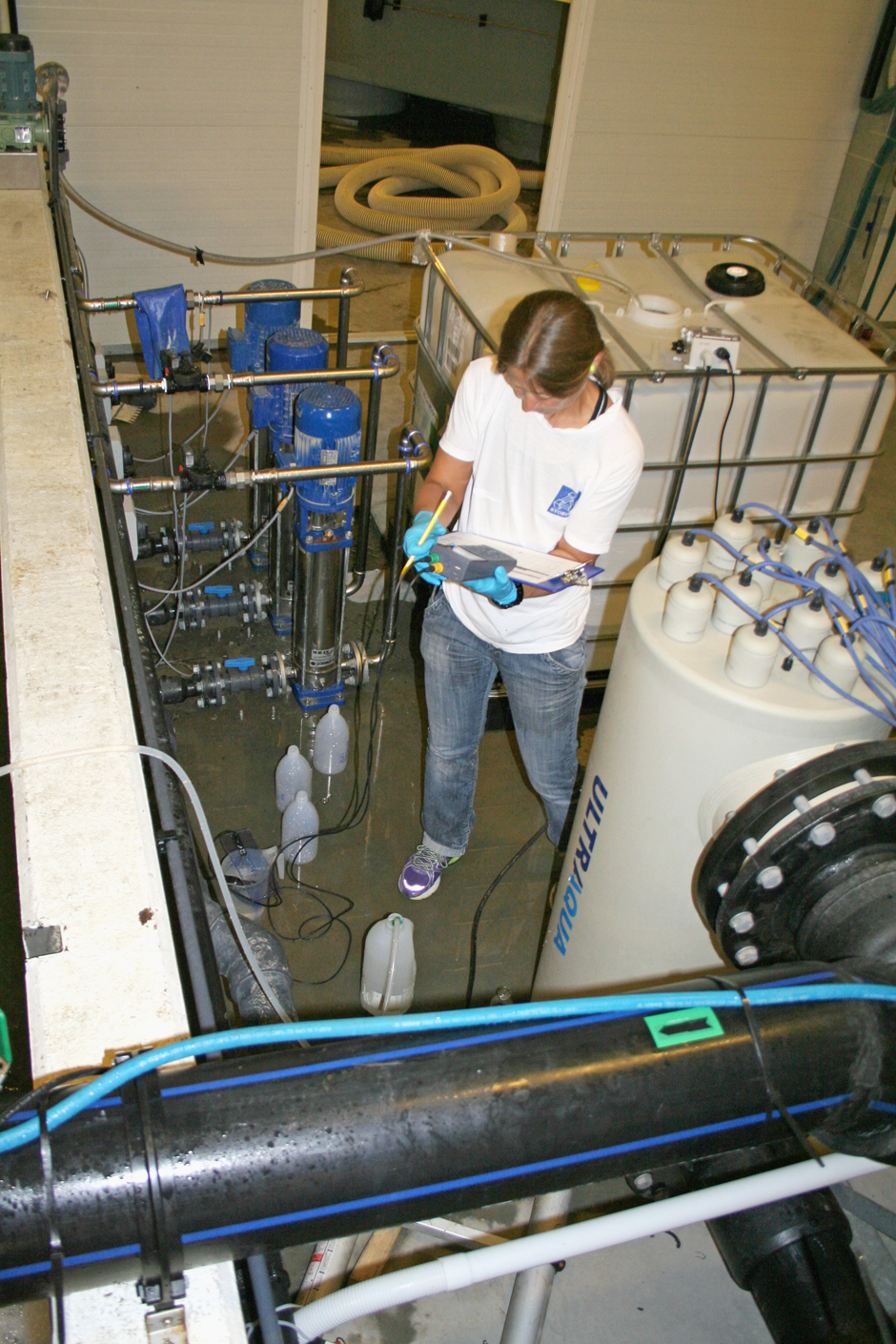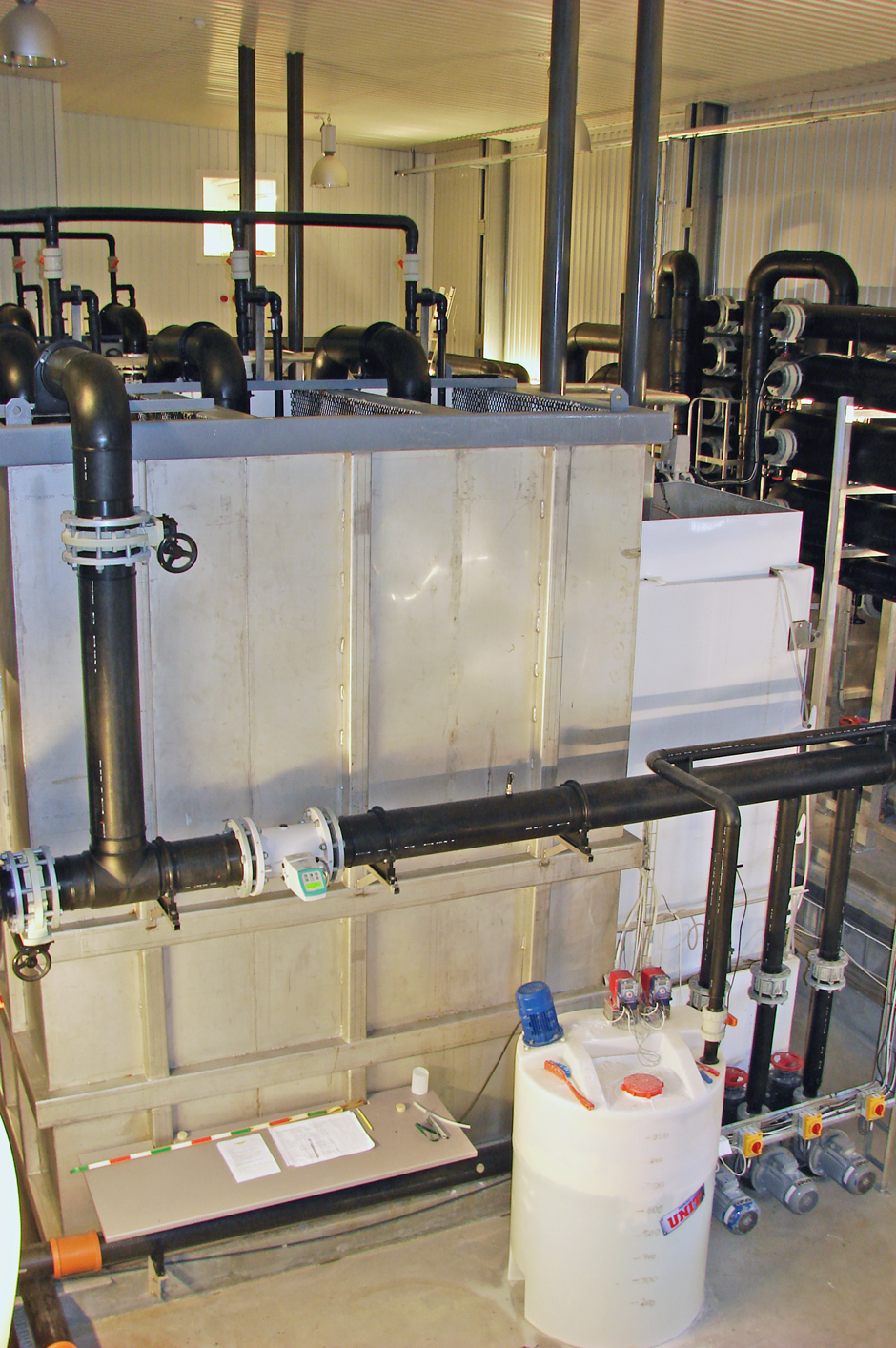Recirculating Aquaculture Systems: Staying On Top of Water Quality
 Nofima Centre for Recirculation Aquaculture, Sunndalsøra, Norway (Credit: Jelena Kolarevic)
Nofima Centre for Recirculation Aquaculture, Sunndalsøra, Norway (Credit: Jelena Kolarevic)Good water quality is essential for recirculating aquaculture systems (RAS). In RAS systems, water is purified and reused continuously as part of a closed system. Waste products are removed or converted into non-toxic products, and the purified water is subsequently saturated with oxygen before returning to the tanks.
Water quality can determine the success or failure of RAS, and farmers must ensure that it’s always optimal for the species in question.
Improving Fish Wellbeing through Recirculating Aquaculture Systems
Jelena Kolarevic of UiT The Arctic University of Norway in Tromsø is part of the RAS 4.0 project. Kolarevic’s work aims to improve fish wellbeing and production efficiency. Furthermore, the project seeks to reduce operational risks through integrated control systems for water quality, feeding and energy optimization.
“The most important reason for deteriorating water quality is a lack of precision feeding,” she said. “Since camera technology is limited, farmers tend to estimate biomass based on expected growth and feed according to that. But if you overfeed, a lot of uneaten feed remains, and this must be rapidly removed. The right feed quantity is important, but so too is feed quality. Feed changes constantly based on available ingredients on the market. Farmers must understand their digestibility and how stable pellets and waste might be in water.”
Water quality can be monitored through shorter sampling intervals or continuous measurements. However, fully automized water quality control in RAS has not been achieved. “In project RAS 4.0, we aim to provide biologically-driven, rapid response automation of production conditions, including feeding and water quality control,” said Kolarevic.

(Credit: BactiQuant)
Important Parameters
Most commonly, temperature, pH, CO2, turbidity, alkalinity and salinity are measured regularly on RAS farms in addition to ORP (oxygen reduction potential), EC (electrical conductivity,) and DO (dissolved oxygen). Nitrite and ammonia are measured in intervals ranging from hours to days.
Oxygen is measured in each rearing unit due to rapid changes depending on the physiological state of the culture species (e.g., after feeding, oxygen consumption increases). Online sensors, which measure continuously and enable operators to see trends over time, and spectrophotometers, which measure one or several spots in the system, are both common.
Danish firm BactiQuant has developed a technological platform called Enzyme Targeting Analysis (ETA) for delineating microbial contamination in various industries.
“Rapid monitoring on RAS farms is a prerequisite to detect and identify the impact of feed on water quality or the effects of biofilter maintenance. Our technology adds to maintaining a stable, optimal production environment,” said Christina Katsaiti, Sales Engineer at BactiQuant.
Different Methods of Ensuring Quality in Recirculating Aquaculture Systems
Under the ETA platform, BactiQuant offers two solutions to maintain a stable environment: BactiQuant-water, a testing assay to detect bacteria, and FungiCount, a testing assay to detect fungi in water samples. Both target enzyme activities that occur naturally within bacteria or fungi, including planktonic free-living bacteria, Particle Associated Bacteria (PABs), which are highly relevant for aquaculture, and fungal biomass such as spores, microfragments and hyphae.
Kolarevic explained, “They only measure the presence of bacteria and fungi. It is the farmer that has to do the work to maintain a stable environment. To do this, they need to understand why the amount of bacteria or fungi in their water changes over time.”
The testing assays work with the use of two instruments that the company offers: a handheld device (BactiQuant mobile) that monitors both bacteria and fungi; and a sample robot (BactiQuant online) that monitors bacteria. BactiQuant mobile provides flexible sampling and facilitates troubleshooting. Samples can be taken from the whole water loop, including all fish tanks and critical control points such as before and after water treatment.

Nofima Centre for Recirculation Aquaculture, Sunndalsøra, Norway (Credit: Jelena Kolarevic)
Getting Results
Results are displayed within 10 minutes for bacteria and 30 minutes for fungi. BactiQuant online is the fully automated version of the handheld version. It is mounted in certain critical control points in a system where measurements are taken daily, and it automatically samples, analyzes and informs operators. It can grab up to 12 samples per day and be configured to communicate via GSM and/or to other data handling systems like SCADA.
“Our technology provides rapid, robust, reproducible and relevant results that can be easily translated into operational decisions,” said Katsaiti. “We have reduced analysis time from days to minutes. The unique combination of mobile and online technology provides an unprecedented, comprehensive capability to react and follow up on water quality deviations.”
Matthias Hundt of Blue Evolution Aquatechnology in Landau, Germany, says that there are important points for RAS farms to consider when choosing a water quality monitoring system.
Recommended Practices
“I recommend the use of optical DO sensors due to greatly increased measurement stability and reduced manual maintenance in contrast to electrochemical measuring systems,” he said. “Furthermore, I encourage everyone to think about wireless technology. Although the initial equipment costs might be high, installation and maintenance are greatly improved, which saves money in the long term. Additionally, wireless technology increases flexibility with regard to later modifications of a RAS setup and is easier to install.”
Kolarevic believes that another key to good water quality management is farmers’ knowledge and experience.
“Not all farmers can afford expensive sensors, but they can do their best with the equipment they have to measure water quality correctly,” she said. “They must know how to calibrate their probes properly and prevent biofouling on sensor surfaces that can lead to incorrect measurements. They must also know what they are buying and why, and suppliers must have documentation showing what a particular technology can do.”
Good water quality is one of the most important parts of optimizing fish health and wellbeing. RAS systems that feature and prioritize water quality see good growth rates and increased profitability.


Pingback: FishSens Magazine | A History of Harm to Onondaga Lake - FishSens Magazine
Pingback: FishSens Magazine | Creating Sustainable Aquaculture Practices for the Future - FishSens Magazine